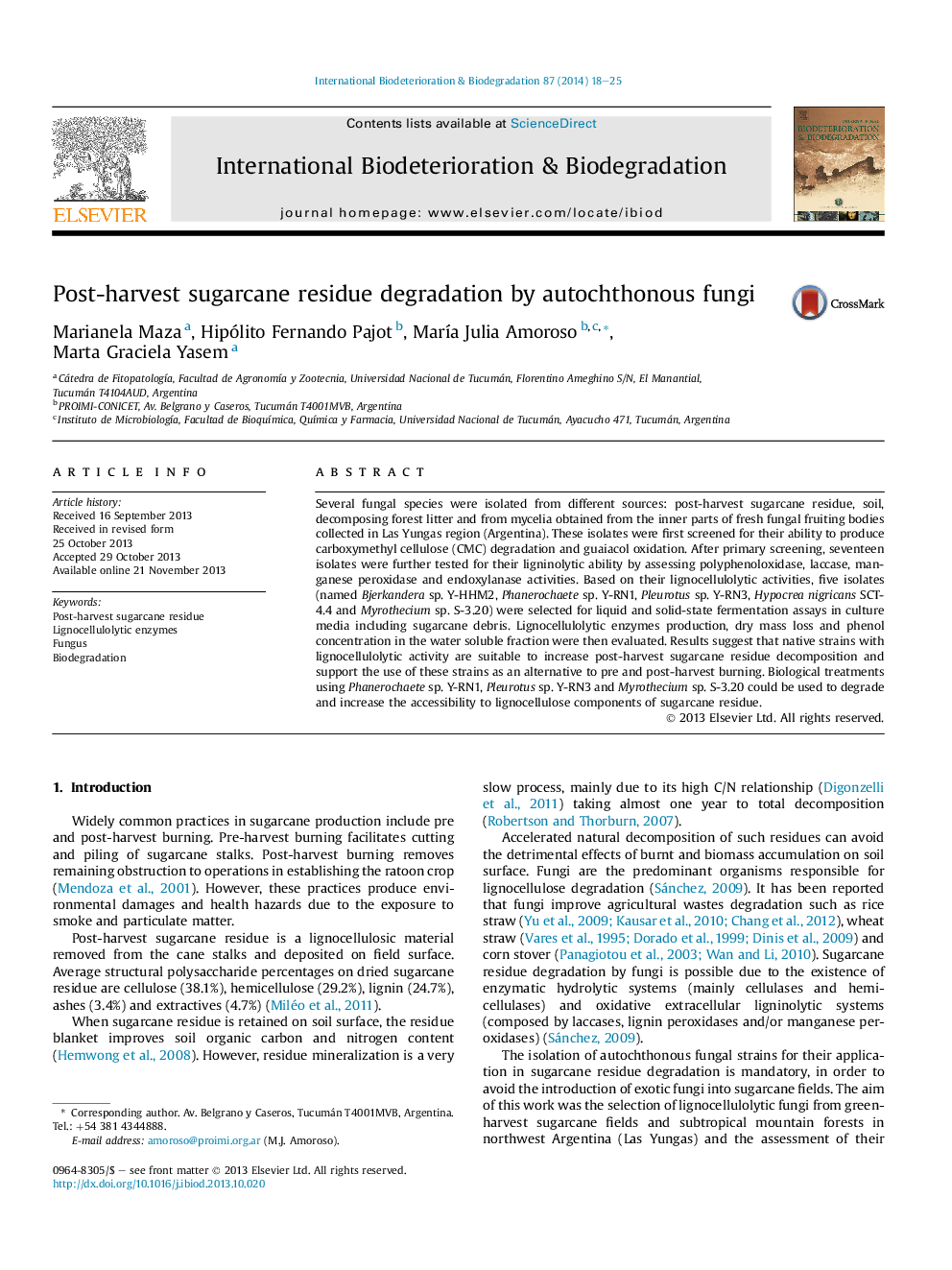| Article ID | Journal | Published Year | Pages | File Type |
|---|---|---|---|---|
| 4364992 | International Biodeterioration & Biodegradation | 2014 | 8 Pages |
•Native strains with lignocellulolytic activity are suitable to increase post-harvest sugarcane residue degradation.•Phanerochaete sp. Y-RN1, Pleurotus sp. Y-RN3 and Myrothecium sp. S-3.20 could be used to degrade sugarcane residue.•Fungal treatments are presented as an alternative to pre and post-harvest burning.
Several fungal species were isolated from different sources: post-harvest sugarcane residue, soil, decomposing forest litter and from mycelia obtained from the inner parts of fresh fungal fruiting bodies collected in Las Yungas region (Argentina). These isolates were first screened for their ability to produce carboxymethyl cellulose (CMC) degradation and guaiacol oxidation. After primary screening, seventeen isolates were further tested for their ligninolytic ability by assessing polyphenoloxidase, laccase, manganese peroxidase and endoxylanase activities. Based on their lignocellulolytic activities, five isolates (named Bjerkandera sp. Y-HHM2, Phanerochaete sp. Y-RN1, Pleurotus sp. Y-RN3, Hypocrea nigricans SCT-4.4 and Myrothecium sp. S-3.20) were selected for liquid and solid-state fermentation assays in culture media including sugarcane debris. Lignocellulolytic enzymes production, dry mass loss and phenol concentration in the water soluble fraction were then evaluated. Results suggest that native strains with lignocellulolytic activity are suitable to increase post-harvest sugarcane residue decomposition and support the use of these strains as an alternative to pre and post-harvest burning. Biological treatments using Phanerochaete sp. Y-RN1, Pleurotus sp. Y-RN3 and Myrothecium sp. S-3.20 could be used to degrade and increase the accessibility to lignocellulose components of sugarcane residue.
